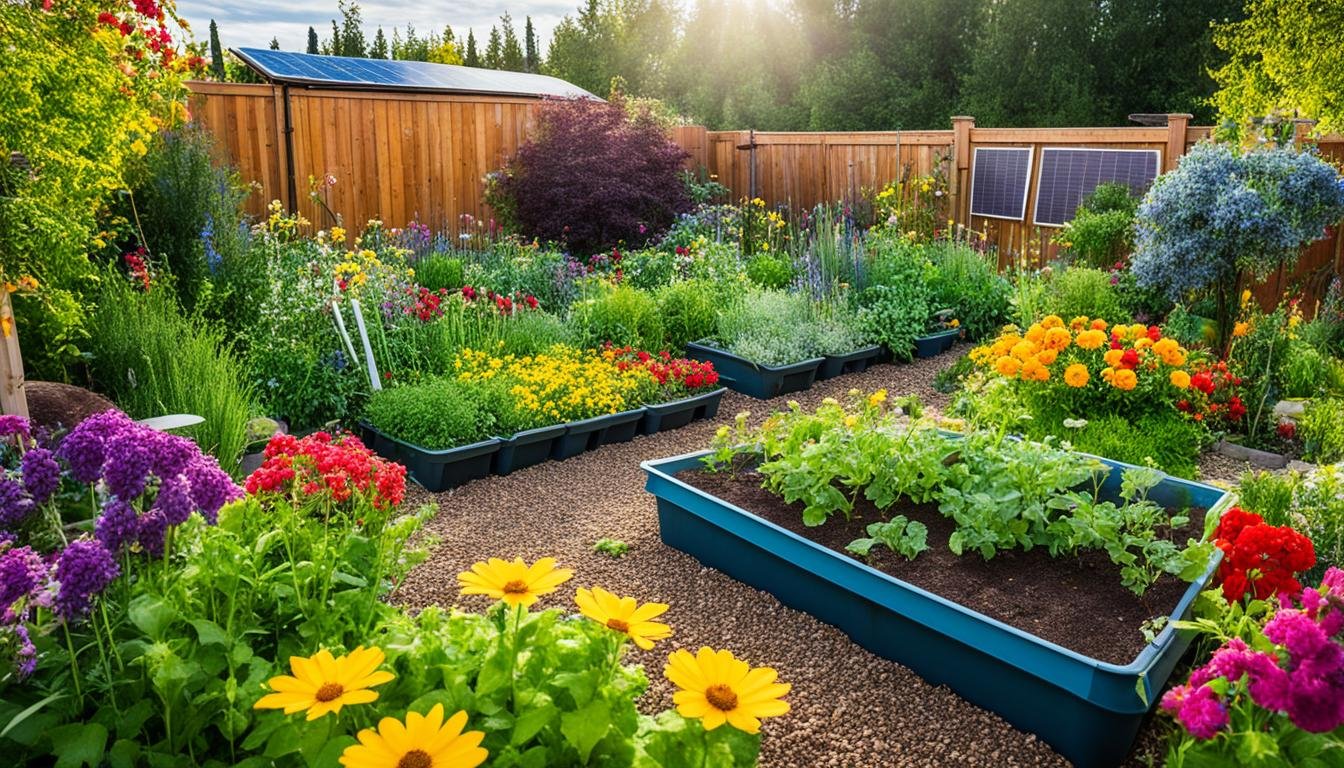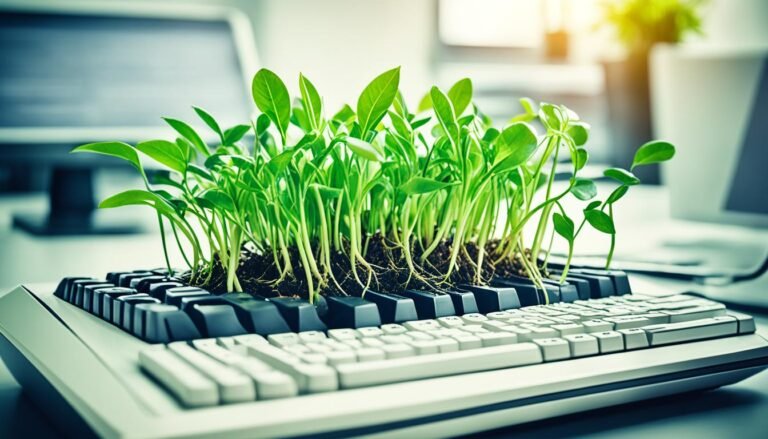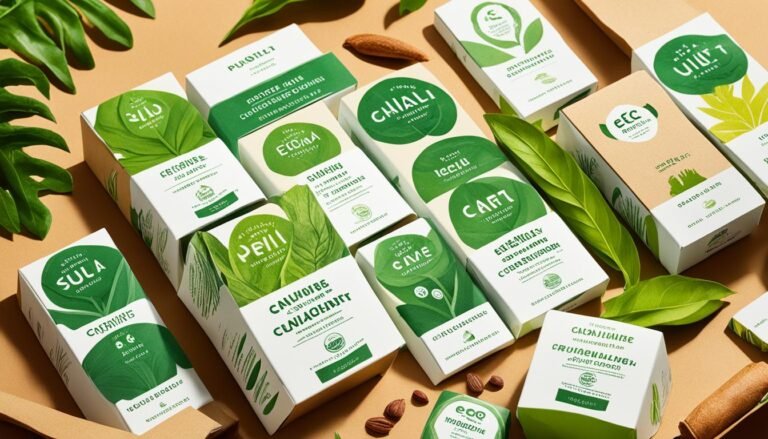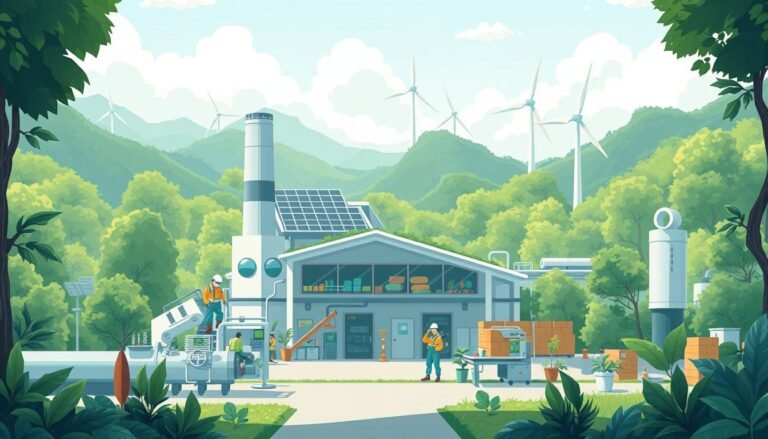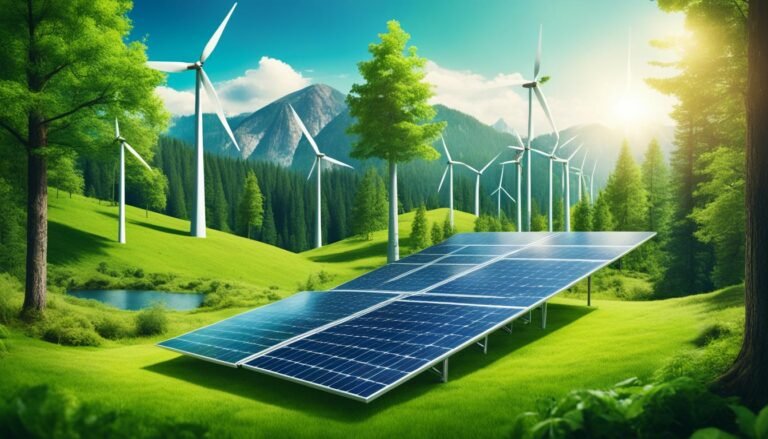Cultivating a Greener Garden: Sustainable Practices for Homegrown Goodness
Cultivating a greener garden means doing things that are good for the Earth. This includes using eco-friendly methods, like natural weed killers and organic fertilizers. These green techniques help keep our planet healthy.
Organic gardening is not only good for our planet, it saves money too. It ensures the food we grow is healthy and safe to eat. By choosing these methods, we help take care of our environment and our health.
Key Takeaways
- Adopting eco-friendly gardening techniques reduces environmental impacts.
- Organic gardening is cost-effective and safe for growing food.
- Natural weed-killing methods contribute to a healthier planet.
- Promoting green gardening techniques enhances environmental stewardship.
- Integrating sustainable practices leads to better well-being.
Introduction to Sustainable Gardening
Sustainable gardening is all about caring for our planet. It means using methods that help the environment. We work with nature to grow our plants and flower.
What is Sustainable Gardening?
It’s a way of gardening that’s kind to the Earth. Instead of chemicals, we use natural ways to grow our plants. For example, we make the soil better with compost. We also plant things that belong where we live, making it easier for them to grow strong.
In the 1950s, farming changed a lot. This change hurt the soil because farmers stopped planting different things together. Now, sustainable gardening is trying to fix that mistake.
The Importance of Eco-Friendly Practices
Being eco-friendly at home is very important. It helps fight issues like climate change and loss of plant and animal life. Our gardens can store carbon, which is really good for the planet.
When food comes from far away, it adds to pollution. But, we can grow some of our food ourselves. This way, we reduce how much food has to travel.
Sustainable gardening also helps us have enough food. It stops us from needing food that harms the Earth. Mixing plants makes our garden strong. This means we don’t have to use as many bad chemicals.
Benefits of Growing Your Own Food
Growing what you eat helps the Earth in many ways. It lowers food waste, which is a big problem today. Food waste in landfills makes a lot of bad gas.
Gardens can be homes for good bugs and animals. By planting wisely, we help nature stay balanced. This way, we use fewer chemicals and the food we grow is healthier.
So, gardening the right way can do a lot of good. It helps the Earth stay healthy and our food safe. It’s a win for everyone.
Building Healthy Soil for Organic Gardening
Building strong soil is key for great organic gardens. Gardeners use natural compost and soil enhancers to make their soil better. This creates a place where helpful organisms grow, making the garden healthier.
Composting Techniques
Compost is essential for organic gardens. It boosts the soil by giving it the nutrients it needs. It also adds to the organic matter in the soil. This makes it great for most plants, since they like the soil to be a bit acidic.
Adding kitchen scraps and yard waste to the compost helps keep the soil’s pH levels right. Composting can be done in various ways. This includes aerobic composting, which uses oxygen and requires turning. Anaerobic composting is for larger amounts of waste and doesn’t need turning. There’s also vermicomposting, where worms turn waste into nutritious castings.
Compost does more than just provide nutrients. It introduces good bacteria and fungi. As it decomposes, it can also adjust the soil’s pH. Compost is full of organic matter, which improves the soil’s structure and helps plants grow better.
Using Natural Fertilizers
Biochar, rock dust, and manure are good for the soil too. They help compost by enriching the soil further. Unlike synthetic fertilizers, they don’t harm the environment. These natural fertilizers are biochar, which comes from the Amazon and improves soil in many ways. Rock dust is full of trace minerals that enrich the soil. And manure, when composted, boosts the soil’s nutrients.
By using these natural additions, the soil stays healthy. This is important for plants to be strong and for gardening to be sustainable. Adequate soil organic matter is a must for good soil. These natural fertilizers ensure the soil is full of what it needs for organic farming.
Water Conservation Methods
Water conservation is key in sustainable gardening. Using different practices to save water can help keep gardens beautiful in dry times.
Mulching to Retain Moisture
Mulching keeps soil moist, perfect for areas where water is scarce. You can use a 2 to 3-inch layer of materials like shredded bark, grass clippings, or coconut coir. These help the soil stay cooler and keep moisture in.
Mulching is not just about saving water. It also boosts the soil by breaking down and adding nutrients over time.
Efficient Irrigation Systems
Drip irrigation and soaker hoses are great for using water wisely. They cut down on evaporation and send water straight to plant roots. This means plants get the moisture they need without using too much water.
These systems are also good for making gardens that need less water. They help in creating drought-tolerant spaces, meaning you don’t have to water as often.
Rain Barrels and Stormwater Management
Using rain barrels to collect water from the sky is very effective for saving water. This not only helps water your garden but also lessens runoff. It reduces soil erosion and prevents the loss of soil nutrients.
Adding features like rain gardens can help deal with heavy rainwater too. This makes gardens better at handling too much water. These steps are at the heart of water-saving and drought-resilient gardening. They bring us closer to a sustainable and eco-friendly way of gardening.
Choosing Native and Drought-Tolerant Plants
Adding plants native to your area helps your yard grow in a way that’s good for the planet. This is especially true when water supplies are limited. These plants need less water and work to keep up, making a big difference in saving resources.
Benefits of Native Plant Species
Native plants know how to handle the local weather and soil’s needs. They don’t need as much water, which is key in dry times. Plus, they create homes for local animals, helping the environment.
When you add compost and use rainwater for these plants, they grow even better. Mixing in with nature’s own water helps you use less from the tap. This is good for both your plants and the earth’s water supply.
Popular Drought-Resistant Plants
Choosing plants that can take more sun and less water is the core of xeriscaping. There are many beautiful shrubs and perennial flowers that fit this bill. They live for many years, needing less care over time.
Think about plants like Lavender, Sage, and Yucca for your yard. They’re not only pretty but also very good for the environment. They need less water and help bring in useful bugs. This makes your garden a healthier place for all creatures.
By making smart choices for your plants and how you care for them, your garden becomes a green haven. It saves water, supports wildlife, and looks beautiful. It’s a win for you and for the earth.
Implementing Natural Pest Control
Natural pest control is key for a healthy garden. It helps manage pests in a natural way and keeps the garden rich in different kinds of plants and animals. More than 80% of American homes have a garden. This shows how crucial it is to use eco-friendly methods to protect our plants.
Companion Planting
Companion planting is a smart tactic. You plant certain plants near each other to keep pests away. For instance, if you plant fragrant herbs like lavender, mint, and rosemary next to your vegetables, it helps reduce the chance of pests attacking.
Companion plants also bring good bugs that eat the harmful ones. Creatures like ladybugs and lacewings enjoy plants like dill, fennel, and yarrow. Having these plants nearby helps keep the pest population in check. It’s a great example of using nature to look after itself.
Attracting Beneficial Insects
Bringing in helpful bugs is another natural way to beat pests. Bugs like ladybugs and lacewings eat up pests like aphids and caterpillars. Planting flowers that insects like these enjoy not only makes your garden look nice but also acts as a pest control system.
It’s also important to keep your garden clean and tidy. This lessens the chance of bad bugs making a home there. Overall, a clean garden is more welcoming to the insects that help it.
Organic Pest Management Solutions
When it comes to dealing with pests, using organic treatments is a safe choice. Things like neem oil and diatomaceous earth are effective against harmful bugs but safe for the beneficial ones. They protect your garden without damaging the environment.
Swapping where you plant things can also stop pests from taking root. This method, known as crop rotation, interrupts their life cycle. It keeps your garden healthy, naturally.
These methods, put together, can make your garden a place where nature itself fights off pests. It’s a way to keep your garden lush and balanced without using harsh chemicals.
Reducing Lawn Areas for Sustainable Landscaping
Traditional lawns use a lot of water, fertilizers, and pesticides. By reducing our lawn areas, we take a big step towards a more sustainable yard. There are many eco-friendly options to make your yard more sustainable.
Alternatives to Traditional Lawns
By choosing alternative lawns, we reduce the environmental downsides of regular lawns. Ground cover lawns need less mowing and watering. This choice is great for the planet. Adding native plants can cut down on water use by half. Native plants are a good match for the local weather and soil.
Benefits of Perennial Ground Covers
Perennial ground covers need little upkeep. They fit naturally into the environment, which means less water and fertilizer is needed. They stop soil erosion and use water wisely. Letting grass clippings sit on the lawn is good for the soil. It helps it stay moist and healthy, meaning less water is needed.
Planting Ornamental Grasses and Shrubs
Ornamental grasses and shrubs add beauty and need fewer resources. This is good for sustainable turf management. They use less water, fertilizer, and pesticides. Choosing these plants makes your yard more interesting. It also helps the environment by supporting a variety of plants and using fewer resources.
Cultivating a Greener Garden: Sustainable Practices for Homegrown Goodness
Ecological gardening methods let you grow a thriving garden and help the planet. They help you get a green harvest, which reduces the carbon footprint. This is because you cut back on transportation and packaging by growing your own food. Plus, growing your own fruits and veggies brings you closer to nature.
The Garden Continuum knows a lot about landscaping and eco-friendly gardening. They say good soil is key, and you should mix in compost to make soil healthier. This helps your plants grow better. Also, think about where the sun shines in your yard before you plant anything.
To save water, use drip systems that water plants at their roots. This method is not only efficient but eco-friendly. You can also plant certain things together to keep bugs away without harmful chemicals. For example, nasturtiums make aphids go away, and basil helps tomatoes grow strong.
Sustainable gardens focus on the bigger picture. By planting at the right times and using the right plants, you avoid problems. Keep the soil healthy by rotating your crops and planting one crop after another. Choose plants that like your local climate to use less water and avoid the need for too much care.
Today’s gardening ideas also spotlight important creatures like bees. They suggest planting flowers that bloom at different times, so pollinators always have food. Using local plants and recycling food scraps through composting can make your garden strong and varied. Best of all, this can lower your garden work and water use.
The Garden Continuum can help you create an eco-friendly veggie garden at home. They focus on good practices to help your garden grow well and be gentle on the earth. By following their advice, you can have a garden that brings people together. It also helps the environment and keeps your food supply safe.
Enhancing Biodiversity with Permaculture
Permaculture focuses on creating gardens rich in ecological diversity. It brings a balance to your landscape. You do this by adding different plants, pollinator gardens, water areas, and spaces for native plants. This helps local animals thrive. The garden becomes a place where both plants and animals support each other.
Designing for Ecological Balance
Permaculture aims for a balanced ecological design. Use companion planting and rotate crops to help nature. Practices like composting and conserving water keep your garden healthy. This creates a cycle where plants and wildlife help each other, growing a diverse, healthy garden.
Increasing Wildlife Habitat
For more wildlife, think about the garden’s layout and what you plant. Make sure your garden has different heights of plants, like tall trees to short ground covers. Use native plants for the best wildlife resources. Adding water features like birdbaths or ponds can bring in more animal friends. Following permaculture ideas makes your garden a care spot for nature while making gardening enjoyable.
Source Links
- Growing Greener Podcast — Growing Greener
- The Benefits of Garden-to-Table Produce Versus Supermarket Varieties
- Home – GoGo Green Garden
- What Is Sustainable Gardening? Eco-Friendly Tips To Grow…
- An Introduction to climate-friendly gardening techniques — Green and Prosperous
- How to Create a Sustainable, Wildlife-Friendly Home Garden | Earth.Org
- Creating Organic Soil for a Healthy and Sustainable Garden
- Practical Tips for Healthy Soil in a Home Garden
- Soil Building – How to Make Deep Rich Soils by Imitating Nature – Permaculture Apprentice
- Sustainable Gardening: Solutions to Climate Change
- Growing a Sustainable Garden: The Best Plants for a Greener Future – Zero Waste Kitchen
- 10 Proven Tips for Creating a Sustainable and Eco-Friendly Garden – Yanko Design
- 10 Sustainable Gardening Tips for an Eco-Friendly Yard
- Sustainable Gardening & Landscaping
- 7 Eco-Friendly Garden Practices to Adopt for Earth Day
- Organic Pest Control for the Garden
- How to Use Natural Pest Control in the Organic Garden
- Organic Methods for Pest Control in the Garden
- How to grow a healthy, no-waste Lawn and Garden
- 10 Tips for a Low-Maintenance, Eco-Friendly Backyard – Tata & Howard
- Easy Ways to Turn Your Yard into a Sustainable Landscape | Yardzen
- Grow Your Own: A Beginner’s Guide to Sustainable Vegetable Gardening at Home
- Sustainable garden ideas – 28 ways to create an eco-friendly garden
- Contribution of Home Gardens to Sustainable Development: Perspectives from A Supported Opinion Essay
- Permaculture Gardening for Beginners: A simple step-by-step guide to growing your own organic food with confidence (Paperback)
- Permaculture Gardening for Beginners – by Cullen Streich (Paperback)
- Organic Garden: A Journey towards Sustainable Living

